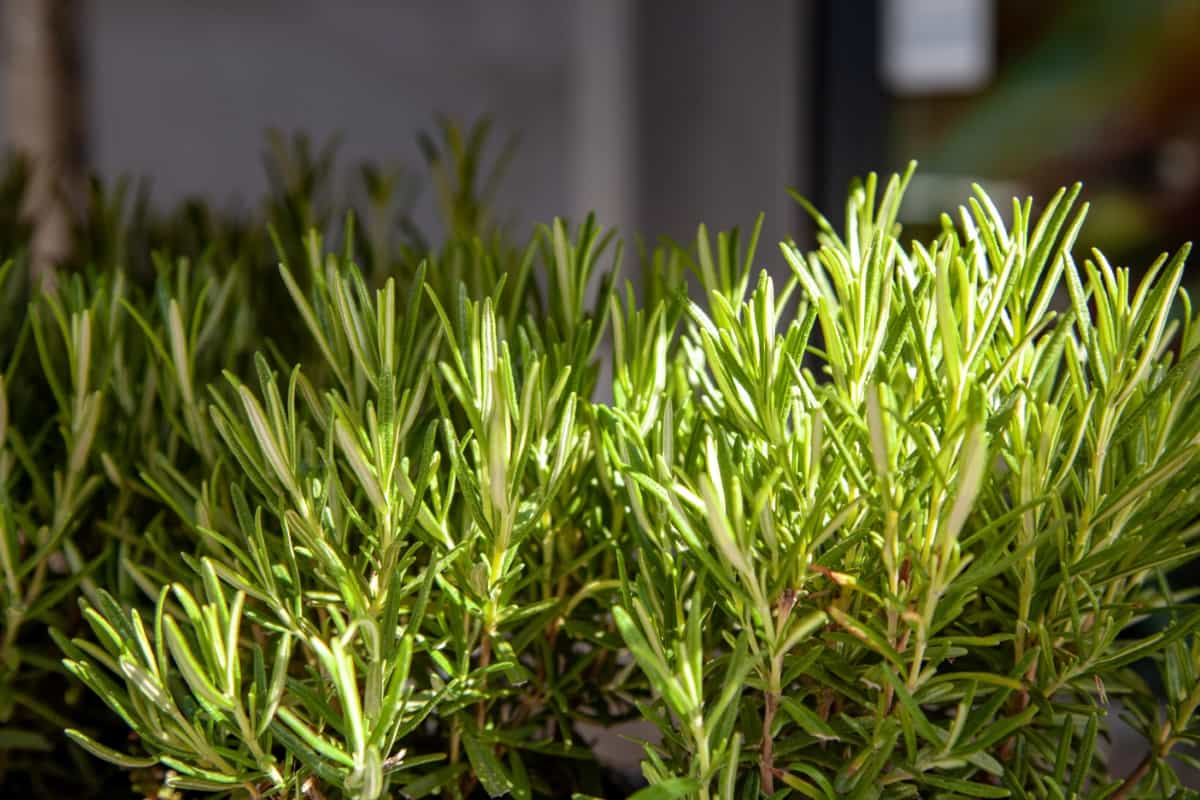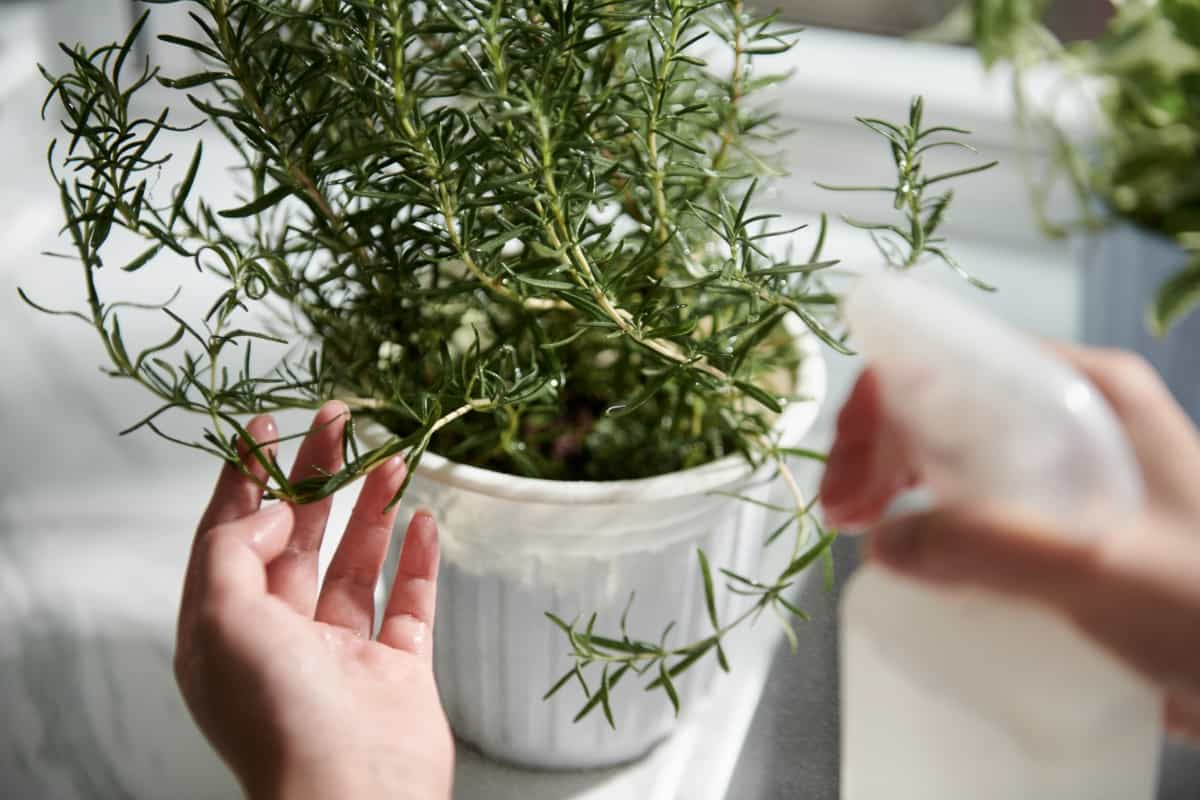There is something particularly disheartening about seeing a rosemary plant, cherished for its aromatic fragrance and culinary uses, gradually fade and die. However, understanding the specific factors that may contribute to a rosemary plant’s demise is the first step towards revitalizing it.

Here we will explore ten reasons your rosemary might be dying and solutions to restore it to health. This comprehensive article will also address common queries such as the reasons behind a rosemary plant turning brown from the bottom up, why a potted rosemary plant might be drying, and what to do when your rosemary appears dead.
10 Causes of a Dying Rosemary Plant
Inadequate Watering
The first and foremost reason that often leads to a dying rosemary plant is improper watering. These plants come from the Mediterranean area, and they like it when it’s wet in the winter and dry in the summer. As such, rosemary plants are drought-tolerant but do not fare well with overwatering or waterlogged soil, often leading to root rot.
When this happens, your rosemary might start turning brown from the bottom up, giving you a clear indication of the problem. To fix this issue, ensure that your rosemary plant is in well-draining soil. Make sure to water the plant well and then let the soil dry before watering it again. Avoid watering the plant lightly and frequently, as this will not benefit the deep root system of rosemary.
Poor Soil Conditions
Rosemary thrives in well-drained, sandy, or gravelly soil with a pH between 6.0 and 7.0. A potted rosemary plant drying up may be the result of being in soil that is too heavy or dense and does not drain properly, or the soil pH may not be in the suitable range for rosemary. You can improve the condition by repotting the plant in better soil or amending the existing soil with organic matter or sand to improve drainage. Regularly testing the soil pH and amending it as needed will ensure it remains in the optimal range for rosemary.
Insufficient Light
Rosemary plants require at least six to eight hours of full sunlight per day. Insufficient light can harm your plant, causing it to lose color and eventually die. Signs of not enough light include weak and thin growth, as well as fewer flowers. If you have indoor rosemary, keep it close to a window facing south or use a grow light. If your plant is outdoors, consider moving it to a spot with more sunlight.
In case you missed it: How to Prepare a Vegetable Garden Planting Beds: Starting from Scratch

Extreme Temperature Fluctuations
While rosemary plants are generally hardy, they do not tolerate extreme temperature fluctuations. Excessive heat can make the plant dry up; extreme cold can harm or even kill it. A gradual decline in your rosemary plant’s health can be a sign of temperature stress. To rectify this, ensure the plant is not in direct contact with hot surfaces during the summer months, and provide a layer of mulch around the base in the winter to insulate the roots.
Fungal Diseases
Fungal diseases are another common problem, particularly in humid conditions or when the plant’s foliage is frequently wet. These diseases often manifest as rosemary turning brown from the bottom up, and in severe cases, your rosemary may be dead. Treatment typically involves removing and disposing of the affected parts of the plant, improving air circulation around the plant, and possibly applying a fungicide.
Pest Infestations
Rosemary plants can also become infested by pests such as spider mites, aphids, and whiteflies. These pests can cause various symptoms, including yellowing leaves and stunted growth; the plant can appear dead in severe cases. Control methods for dealing with pests on plants involve using water to wash away the pests, bringing in helpful bugs like ladybugs that eat those pests, or using special soap or oil to kill them.
Nutrient Deficiencies
A nutrient deficiency can cause various symptoms in rosemary plants, including yellowing leaves, weak growth, and fewer flowers. Rosemary plants require a balance of macro and micronutrients; a deficiency in any of these can lead to poor plant health. If you suspect a nutrient deficiency, have your soil tested to identify any lacking nutrients. Amend the soil as needed with a balanced fertilizer or specific nutrient amendments.
Transplant Shock
Transplant shock happens when you move or replant a rosemary plant. It can make the plant droop, turn brown, and look dead. To prevent transplant shock, avoid unnecessarily moving the plant, prepare the new location or pot, water the plant thoroughly before and after moving, and provide shade for outdoor plants for a few days after transplanting.
Aging
Like all living things, rosemary plants have a natural lifespan and may begin to decline as they age. An old rosemary plant may become woody and less productive and eventually die. Although it’s challenging to stop this natural process, taking good care of the plant from start to end can help it live longer and be more productive.
Incorrect Pruning
Incorrect pruning can also lead to a dying rosemary plant. Pruning too much at once can stress the plant, while not enough can lead to a dense, woody plant with reduced airflow and light penetration. If your rosemary plant is looking unwell after pruning, it might be that it was pruned incorrectly. To fix this, ensure future pruning is done correctly: never remove more than one-third of the plant at a time, aim to create an open, vase-like shape that allows light and air to penetrate the plant, and avoid cutting into the woody stems unless necessary.
In case you missed it: Homemade Fertilizers to Make Money Plant Bushy and How to Grow Faster in Water and Soil

Conclusion
Understanding the intricate requirements of your rosemary plant is crucial to rectify issues that lead to the plant’s decline. A keen observation of the plant’s health, coupled with a timely response to the changes observed, can help rescue your potted rosemary plant drying out or turning brown from the bottom up and restore it to its former glory. Even if your rosemary appears dead, do not lose heart. Often, plants that appear dead can be revived with proper care. Remember, patience is key to plant recovery. As you apply the appropriate changes, give your plant time to respond and recover.
- Ultimate Guide to Ossabaw Island Hog: Breeding, Raising, Diet, and Care
- Ultimate Guide to Juliana Pig: Raising Facts, Size, Diet, Care, and Lifespan
- Raising Lleyn Sheep: Disadvantages, Price, Uses, Characteristics, and Care
- Ultimate Guide to Meishan Pig: Breed Facts, Breeding, Raising, and Care
- Ultimate Guide to Teacup Pigs: Raising, Diet, Lifespan, Cost, and Care
- Guide to Raising Poll Dorset Sheep: Facts, Profile, Characteristics, Uses, and Care
- Ultimate Guide to Bighorn Sheep: Characteristics, Diet, Lifespan, Breeding, and Lifecycle
- Ultimate Guide to Raising Katahdin Sheep: Farming Facts, Breed Profile, Uses, and Care
- Ultimate Guide to Raising Oreo Cows: Belted Galloways Farming Facts, Profile, Uses, and Care